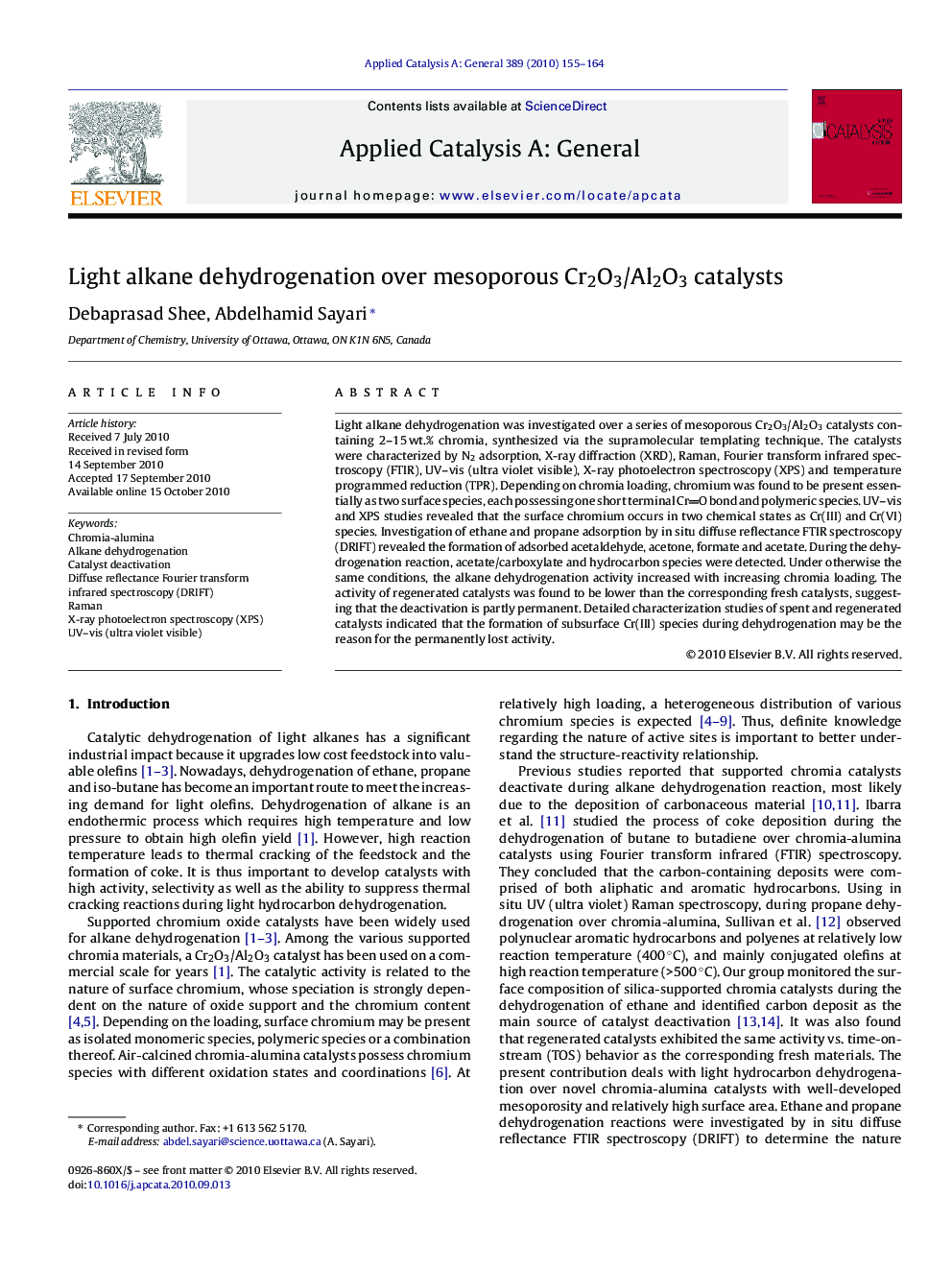| کد مقاله | کد نشریه | سال انتشار | مقاله انگلیسی | نسخه تمام متن |
|---|---|---|---|---|
| 41892 | 45903 | 2010 | 10 صفحه PDF | دانلود رایگان |

Light alkane dehydrogenation was investigated over a series of mesoporous Cr2O3/Al2O3 catalysts containing 2–15 wt.% chromia, synthesized via the supramolecular templating technique. The catalysts were characterized by N2 adsorption, X-ray diffraction (XRD), Raman, Fourier transform infrared spectroscopy (FTIR), UV–vis (ultra violet visible), X-ray photoelectron spectroscopy (XPS) and temperature programmed reduction (TPR). Depending on chromia loading, chromium was found to be present essentially as two surface species, each possessing one short terminal CrO bond and polymeric species. UV–vis and XPS studies revealed that the surface chromium occurs in two chemical states as Cr(III) and Cr(VI) species. Investigation of ethane and propane adsorption by in situ diffuse reflectance FTIR spectroscopy (DRIFT) revealed the formation of adsorbed acetaldehyde, acetone, formate and acetate. During the dehydrogenation reaction, acetate/carboxylate and hydrocarbon species were detected. Under otherwise the same conditions, the alkane dehydrogenation activity increased with increasing chromia loading. The activity of regenerated catalysts was found to be lower than the corresponding fresh catalysts, suggesting that the deactivation is partly permanent. Detailed characterization studies of spent and regenerated catalysts indicated that the formation of subsurface Cr(III) species during dehydrogenation may be the reason for the permanently lost activity.
Figure optionsDownload high-quality image (35 K)Download as PowerPoint slideResearch highlights▶ Novel mesoporous Cr2O3/Al2O3 were synthesis and tested for light alkane dehydrogenation. ▶ XPS studies revealed that surface chromium occurs in two chemical states as Cr(III) and Cr(VI). ▶ Characterization of spent and regenerated catalysts indicated that the formation of subsurface Cr(III) species during dehydrogenation may be the reason for partial irreversible loss of activity.
Journal: Applied Catalysis A: General - Volume 389, Issues 1–2, 1 December 2010, Pages 155–164